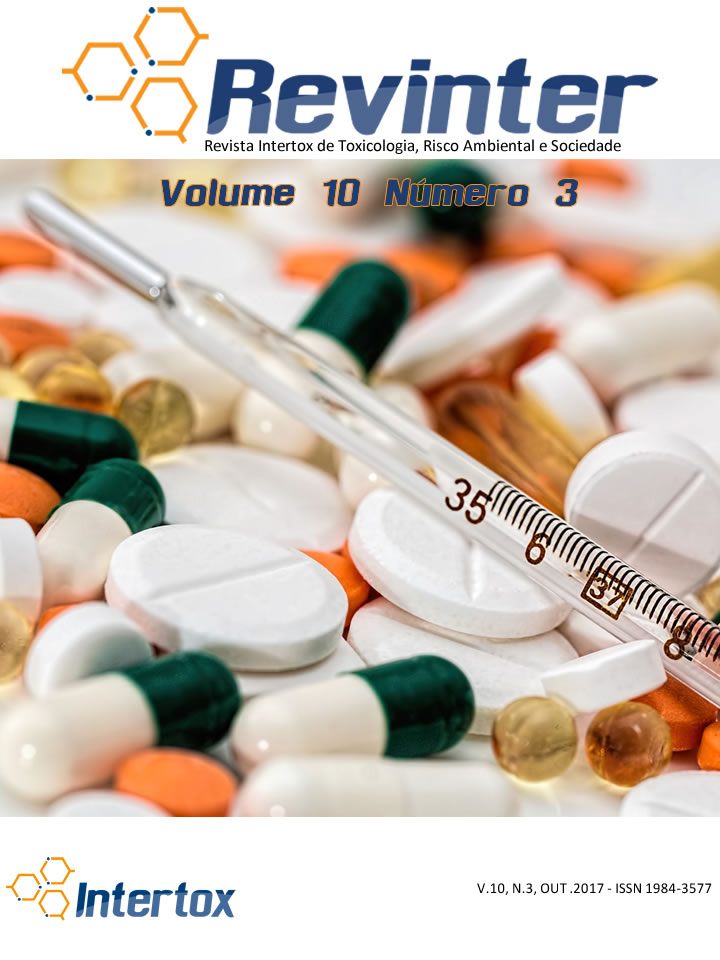Cypermethrin exposure and effects on the reproductive male system: a literature review
Palavras-chave:
Toxicologia, educação sustentável
Resumo
The use of pesticides has become a major problem of public and environmental health in the world and especially in Brazil, which consumes tons of these compounds every year since the 50s. Among the pesticides, cypermethrin is an admittedly widely used synthetic pyrethroid due to its broad spectrum of action, resulting in its massive use in the agricultural sector. Epidemiological data show a considerable increase in the incidence of diseases in the male reproductive tract among them, the decline of sperm quality in various regions of the world, with consequent increase in demand for assisted reproduction services and increased incidences of cryptorchidism, hypospadias and testicular tumors. In recent years, researchers have shown that some pyrethroid compounds are capable of interfering with the endocrine system of animal species, including human being and therefore can be considered as endocrine disrupters. They can result in a deviation from normal homeostatic control or reproduction by interfering with the synthesis, secretion, transport, binding, action or elimination of natural hormones. It has been reported that endocrine disruptors may be responsible for the decline in sperm density and increase in hypospadias, cryptorchidism and testicular cancer in humans. In this sense, experimental studies have shown that cypermethrin acts indirectly on male gametogenesis, interfering with the synthesis of testosterone. Other disorders induced by cypermethrin are also reported, as structural changes of the seminiferous tubules, morphological changes in germ cells and sperm as well as a reduction in their count in semen. This paper aims to demonstrate aspects of endocrine disruption in the male reproductive system related to cypermethrin exposure, using data from animal studies (in vivo) and biological samples of human beings (in vitro).Referências
Agência Nacional de Vigilância Sanitária. 2006. Pesticide residues in food. Rev. Saude Publica 40: 361–363.
Agência Nacional de Vigilância Sanitária. 2016. Programa de Análise de Resíduos de Agrotóxicos em Alimentos – PARA. Relatório das análises de amostras monitoradas no período de 2013 a 2015
Agência Nacional de Vigilância Sanitária. C10-Cipermetrina. Brasília, 2016. Disponível em: http://portal.anvisa.gov.br/documents/111215/117782/C10%2B%2BCipermetrina.pdf/37400888-3f11-44ed-b53f-dea1abacb865. Acesso em: 01 de outubro de 2016.
AHMAD, M. et al. Deleterious effects of cypermethrin on sêmen characteristics and testes of dwarf goats (Capra hircus). Experimental and Toxicologic Pathology, v. 61, p. 339–346, 2009.
AIRES, M. M. Fisiologia. 4. ed. Rio de Janeiro: Guanabara Koogan, 2012. p. 1317.
Amaral S, Amaral A, Ramalho-Santos J. Aging and male reproductive function: a mitochondrial perspective. Front Biosci (Schol Ed) 2013; 1;5:181-97.
ARAÚJO, C. H. M. et al. Gametogênese: Estágio fundamental do desenvolvimento para reprodução humana. Medicina (Ribeirão Preto). v. 40, n. 4, p. 8-551, 2007.
ARRUDA, R. P. et al. Métodos de avaliação da morfologia e função espermática: momento atual e desafios futuros. Rev. Bras. Reprod. Anim. v. 35, n. 2, p. 145-151, 2011.
Agência Nacional de Vigilância Sanitária. 2016. Programa de Análise de Resíduos de Agrotóxicos em Alimentos – PARA. Relatório das análises de amostras monitoradas no período de 2013 a 2015
Agência Nacional de Vigilância Sanitária. C10-Cipermetrina. Brasília, 2016. Disponível em: http://portal.anvisa.gov.br/documents/111215/117782/C10%2B%2BCipermetrina.pdf/37400888-3f11-44ed-b53f-dea1abacb865. Acesso em: 01 de outubro de 2016.
AHMAD, M. et al. Deleterious effects of cypermethrin on sêmen characteristics and testes of dwarf goats (Capra hircus). Experimental and Toxicologic Pathology, v. 61, p. 339–346, 2009.
AIRES, M. M. Fisiologia. 4. ed. Rio de Janeiro: Guanabara Koogan, 2012. p. 1317.
Amaral S, Amaral A, Ramalho-Santos J. Aging and male reproductive function: a mitochondrial perspective. Front Biosci (Schol Ed) 2013; 1;5:181-97.
ARAÚJO, C. H. M. et al. Gametogênese: Estágio fundamental do desenvolvimento para reprodução humana. Medicina (Ribeirão Preto). v. 40, n. 4, p. 8-551, 2007.
ARRUDA, R. P. et al. Métodos de avaliação da morfologia e função espermática: momento atual e desafios futuros. Rev. Bras. Reprod. Anim. v. 35, n. 2, p. 145-151, 2011.
Publicado
2017-10-30
Como Citar
Andrade, I. B. L. de, Souza, N. P. de, & Pascotto, V. M. (2017). Cypermethrin exposure and effects on the reproductive male system: a literature review. Revista Intertox De Toxicologia, Risco Ambiental E Sociedade, 10(3). https://doi.org/10.22280/revintervol10ed3.293
Seção
REVISÕES DE LITERATURA
Copyright (c) 2017 Revista Intertox de Toxicologia, Risco Ambiental e Sociedade

This work is licensed under a Creative Commons Attribution 4.0 International License.


